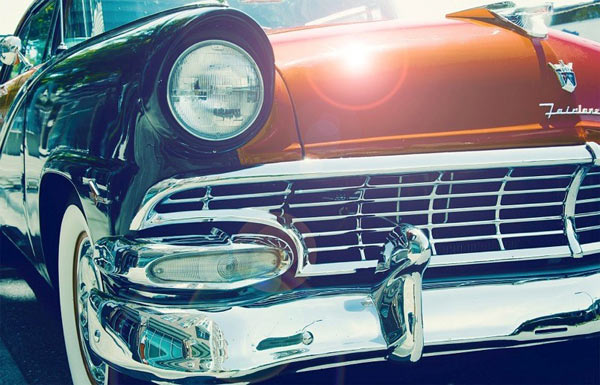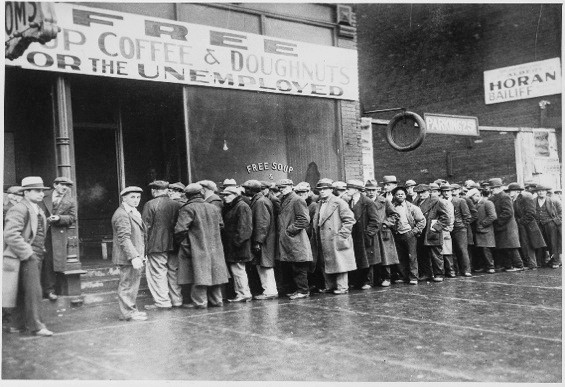Best Muscle Cars
The Evolution of American Auto Manufacturing

by Josh Joubert
From Henry Ford’s Model T to the development of driverless vehicles, the auto manufacturing industry is constantly evolving to meet the needs of Americans. The automobile industry has had a significant societal and economic impact on the U.S. and continues to shape American influence in the global economy. Let’s trace American auto manufacturing from its humble beginnings to the booming industry it is today.
From Bicycles and Carriages to Gas-Powered Engines

The first American automobile was born in a Massachusetts bicycle shop. Mechanics J. Frank and Charles Duryea are credited with the creation of America’s first gas-powered carriage in 1893. By 1895, they had entered and won America’s first automobile race and began selling their vehicles within the year. Automobile production and sales caught on quickly in the United States, and, by 1899, over 2,000 automobile vehicles had been sold, with hundreds more vehicle manufacturers joining production over the next decade.
The American Auto Advantage
Even though the auto industry was also experiencing market creation in European countries, several factors made the U.S. one of the leading manufacturers of automobiles in the early 20th century. The first was demand. The vast size of the U.S. with a large distance between cities necessitated a method of relatively fast transportation essential for the developing economy.
Also, the growing wealth of Americans and a more equitable income distribution made for a larger automobile consumer base. Finally, the lack of extra taxes and relative inexpensiveness of raw materials for manufacturing made America the ideal setting for the fledgling automobile industry.
A “Car for the Great Multitude”
Perhaps the most influential development in the early years of the automobile industry was the mass production innovations made by Henry Ford. Using belt-based manufacturing that streamlined the production process, Ford’s company could produce cars more quickly and at a lower cost than his competitors.
Before Henry Ford’s revolutionary manufacturing techniques, the gasoline-powered vehicle, or
horseless carriage, as it was often referred to, was only accessible to the very wealthy. The innovative manufacturing techniques that led to the creation of the Model T made the automobile something the common man could afford. Created in 1908, the Model T was easy to drive, easy to repair, and easy to use over bumpy terrain, which made it ideal for American farmers and rural workers.
Other auto manufacturers adopted the techniques developed by Ford, shaping the way cars were created across the United States and giving rise to some of America’s most profitable companies.
How the Car Changed American Society

The impact of the affordable automobile reverberated throughout American society. The mass production of cars created tens of thousands of new jobs for Americans, both in automobile production factories, as well as in the production of raw materials needed to produce the cars. With cars also came the need for insurance policies, which greatly expanded the insurance industry. Americans also saw a need for reliable services for car maintenance, repair and supplies.
The car allowed rural societies to become more connected with the urban and brought improvements to previously isolated settlements. This gave rise to American suburbs, which greatly impacted the way Americans worked and lived. With the car came a new chapter in American society.
Cars and the Economy

Like any industry, the automobile producers were subject to and shaped by the evolving economy of the U.S. and the rest of the world. Car production took a hit during the Great Depression, along with many other manufacturers, although, despite declining economic times, over half of all American families owned cars during this time.
Nevertheless, innovation in the automobile industry was slow-paced after the invention of the Model T. Automotive technology, such as a self-starter, high-compression engine, and automatic transmission, stayed relatively the same from the 1920s to the 1950s.
Wartime also affected the development of cars, with American manufacturers limited to producing vehicles that were more heavy-duty, such as jeeps, tanks, and trucks. The production of the wartime vehicles helped to revive the industry, but the U.S. also began to see competition from Japanese manufacturers that were producing smaller passenger vehicles.
The Big Three and the Decline of the American Auto Industry
“The Big Three” is the name given to the American auto manufacturers who rose to dominate the American market after the standardization of production techniques. Detroit-based companies Ford Motor Company, General Motors, and Chrysler became America’s top manufacturers, cornering the market for both the affluent and the middle class.
But the mass production of cars during the prominence of the Big Three would lead to some problems. Large vehicles with a new variety of amenities raised the cost of these vehicles, as well as their polluting emissions. This would become especially problematic with the drastic increases in fuel prices. With the Japanese manufacturers producing cars at lower costs and lower emissions, the U.S. auto industry saw a decline in the early 1980s.
Revamping the Industry to Meet the Needs of Modern America
Rather than accepting an inconsequential place in the global automobile market, American companies adapted and changed to the demands of the times to remain competitive. Focusing on product quality and employee satisfaction rather than aesthetics, American companies began to create cars that were safer and more fuel efficient. These efforts for revitalization helped to restore the U.S. as a world leader in automobile manufacturing.
Innovations in American Cars Today
Today, new technologies are making cars safer and more efficient than ever before. They include safety features that alert drivers to road concerns, helping to eliminate the possibility of accidents caused by driver error. Many modern cars are now providing ways to connect to technology like phones and tablets.
Americans might soon see driverless cars that brake, navigate, and park without driver intervention. Autonomous features on cars are quickly being introduced in American markets, making a fully driverless car a possibility for the future. Not only would this eradicate human driver error, but it would also revolutionize the way we travel.
Final Thoughts
American auto manufacturing has shaped the United States, just as the evolving needs of its citizens have shaped the industry. The history of American auto manufacturing contains both great success and great failures, but, ultimately, the industry has evolved to be a significant world player in the production of cars. As technology continues to be created, we can count on American manufacturers to be leaders in the development of cutting-edge technology that will create safer roadways and a healthier environment.
Image links
Image 1: https://digitalcollections.nypl.org/items/510d47e3-3be7-a3d9-e040-e00a18064a99
Image 2: https://digitalcollections.nypl.org/items/510d47d9-3da3-a3d9-e040-e00a18064a99
Image 3: https://cdn.pixabay.com/photo/2014/10/09/23/35/car-482683_1280.jpg
Image 5: https://cdn.pixabay.com/photo/2016/08/31/22/34/auto-1634815_1280.jpg






0 comments